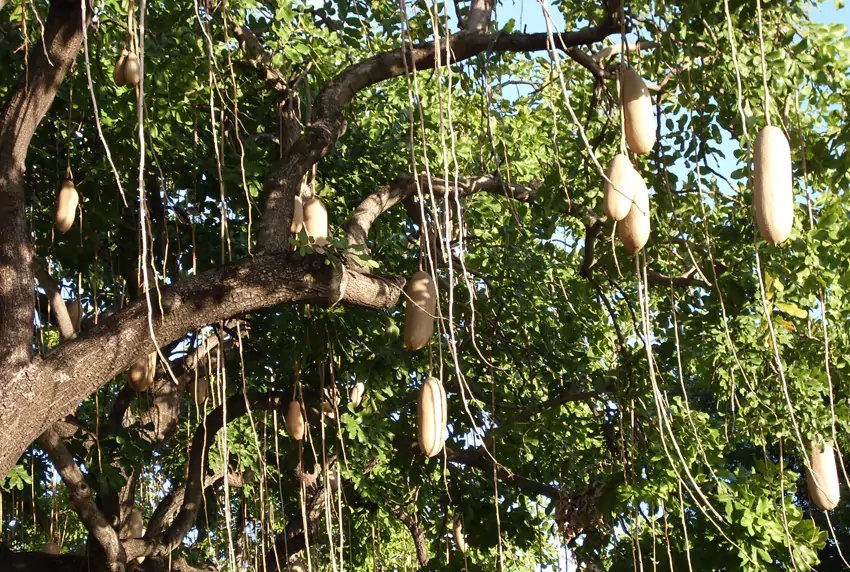Sausage Tree

Sausage Tree Overview
The kigelia tree is more commonly known as sausage tree, referring to the sausage-like fruit it bears. The fruit is heavy and wood-like and difficult to open without a knife. In its raw state it is poisonous. In African folk medicine it is first dried, roasted or fermented before being consumed to cure a variety of ailments, such as rheumatism or snakebites.
The tree grows up to 65 feet (20 m) tall and its bark is grey and peeling on older trees. Its wood is a pale brown or yellow. The tree is interesting to look at because of its unusual looking fruit, however, it is not a good idea to have a picnic in a sausage tree's shade as the falling fruit can cause serious injury.
Frequently Asked Questions
Why is it called a sausage tree?
The tree gets its name from its long, heavy, sausage-shaped fruit that dangles from its branches on rope-like stalks.
Is the fruit of the sausage tree edible?
No, not in its raw state. The fruit is poisonous when fresh, but can be used medicinally after drying, roasting, or fermenting.
How is the sausage tree used in folk medicine?
In African traditional medicine, the fruit is prepared and used to treat ailments like rheumatism, skin infections and snakebites.
How tall does a sausage tree grow?
The sausage tree can grow up to 65 feet (20 meters) tall and has pale brown wood and peeling gray bark as it matures.
Is it safe to sit under a sausage tree?
No. The fruit is large and heavy - falling sausages can cause serious injury, so it's best to avoid picnicking underneath!








